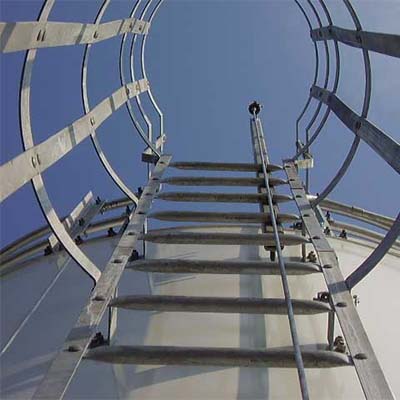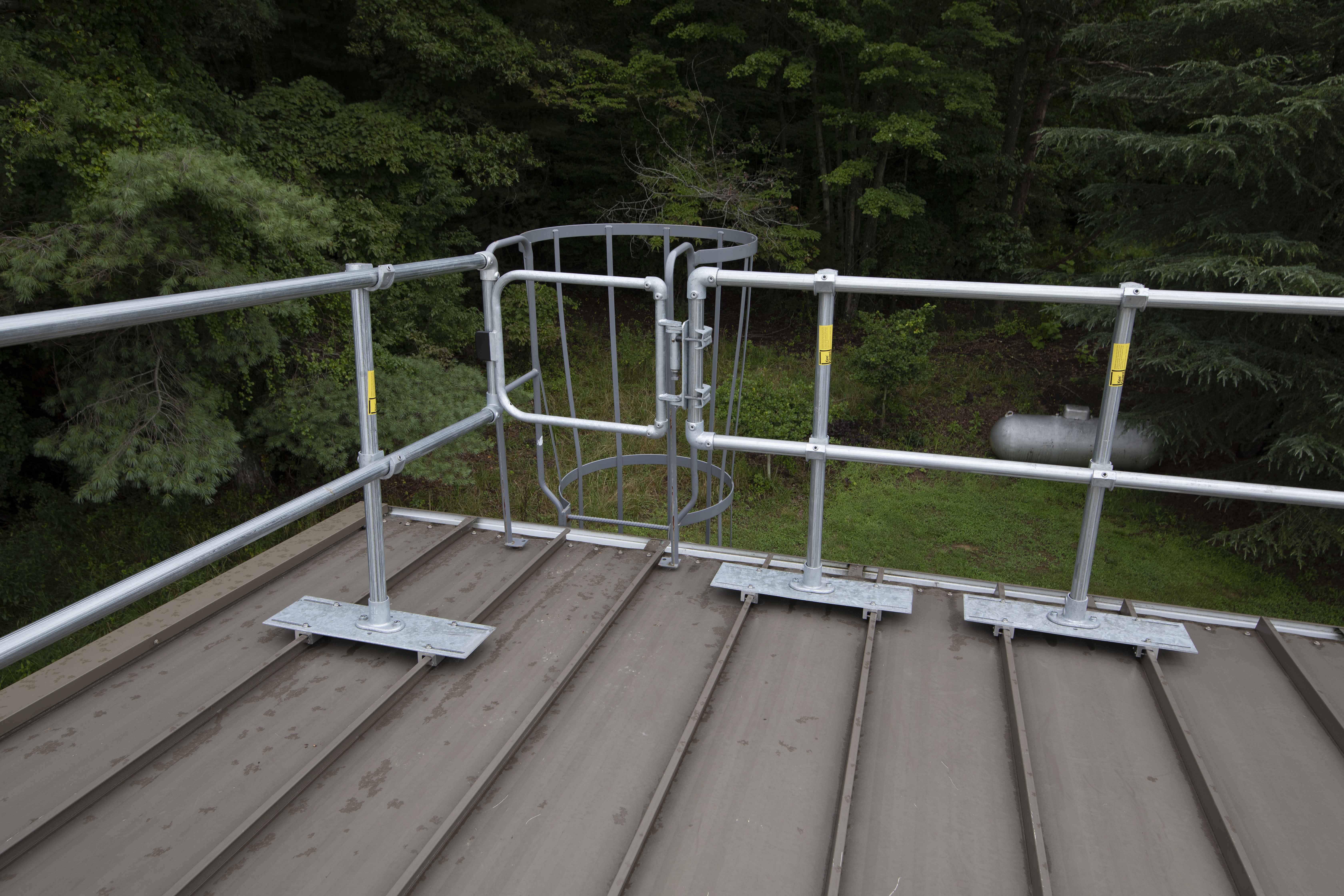Do Your Ladders Meet OSHA Standards?
3 Requirements for Safely Climbing a Fixed Ladder

In 2017, OSHA updated its regulations for walking-working surfaces making ladder cages an ineffective means of fall protection. OSHA 1910.29(i) states that all new or replacement ladders 24 feet or higher installed on or after November 19, 2018, must be equipped with a personal arrest system or a ladder safety system. Personal arrest systems, like vertical lifelines, are somewhat straight forward, but what exactly is a ladder safety system? Let’s take a look.
What is a Ladder Safety System?
A ladder safety system is designed to reduce the possibility of falling from a ladder by securing the climber from the bottom of the ladder to the top of the walking-working surface. A safe ladder system doesn’t stop at the top of the ladder. Statistically, the transition from the ladder to the rooftop is one of the most dangerous fall hazards. That is why it’s important to make sure your ladder safety system will protect you from the bottom of the ladder to the roof’s surface where the work will take place.
OSHA’s updated regulations did not change the protection required at the top of the ladder and the roof’s edge. OSHA mandates that a worker must be protected from these types of fall hazards, which is why a complete ladder safety system is imperative to protect your workers from a fall hazard. So what makes up a safe ladder system?

Three Parts of a Complete Ladder Safety System
1. Ascending the Ladder Safely
The first aspect of a safe ladder system ensures that you and your workers are able to climb the ladder safely. This can include the use of a vertical lifeline or a ladder safety system paired with a body harness and short safety lanyard. Ideally, the ladder safety system would allow you to climb freely. In the case of a fall, the personal arrest system would catch you.
2. Transitioning to the Walking-Working Surface
Once you’re at the top of the ladder, you have to ensure that you’re able to cross over the top of the ladder and transition to the walking-working surface safely. The safest way to transition to the roof from the ladder is to be able to walk through a self-closing safety gate before you have to unclip from your personal arrest system or vertical lifeline. This will ensure you are in a safe zone prior to unclipping.
3. Protecting the Edge

To ensure you and your workers are completely protected, it’s important that guardrail is placed along the edge where there is a fall hazard. This will add another layer of fall protection once a worker steps through the gate and walks onto the working surface. By doing this, you align with OSHA’s requirements for working at height and give peace of mind to you and your team.
Choosing a ladder safety system for your facility is only half the battle. It is important that all personal using the system are fully trained on how to properly execute safe climbing procedures. Improper use of fall protection equipment is one of the leading causes of injury on the job. It’s important that you review your facility and start taking precautions now.
If you still have questions about ladder safety systems. Contact our team of Fall Protection Specialists for help.


